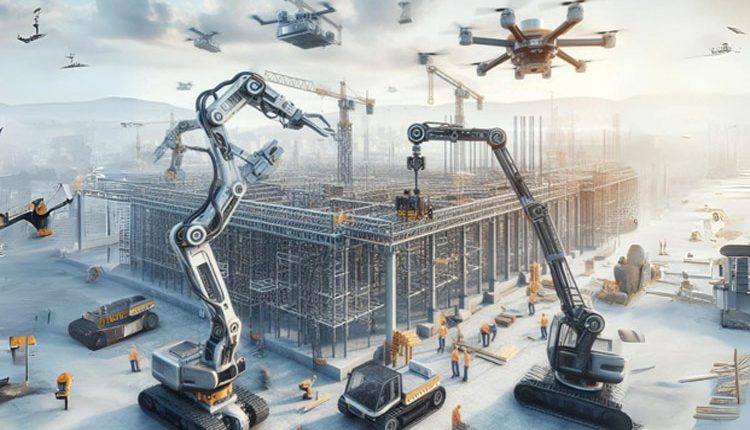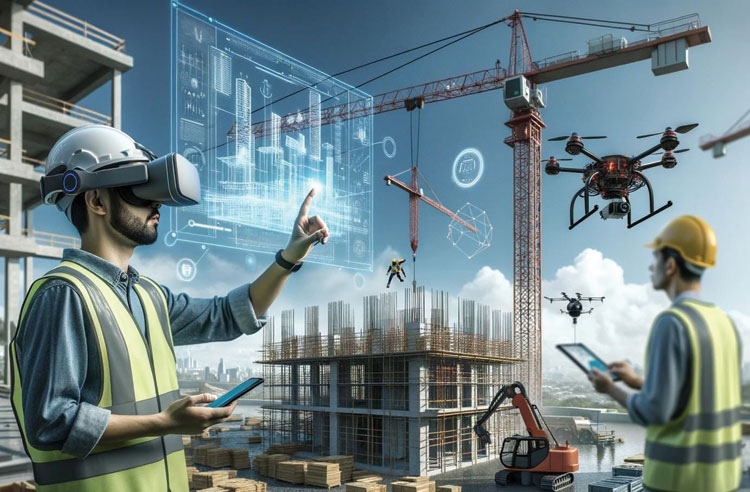The construction industry is undergoing a remarkable transformation, driven by technological advancements, changing market demands, and the push for sustainability. Emerging trends and innovations in construction technologies and equipment are reshaping how projects are planned, executed, and maintained. From smart materials to advanced machinery and digital tools, the construction landscape is evolving to become safer, more efficient, and environmentally conscious. This article explores the latest trends and innovations that are redefining the industry.
Building Information Modeling
One of the most significant shifts in construction is the integration of Building Information Modeling (BIM). BIM has transformed the way construction projects are designed and managed. By creating digital twins of physical structures, BIM allows architects, engineers, and contractors to collaborate more effectively, anticipate potential issues, and optimize resource allocation. Its ability to visualize every aspect of a building before construction begins has drastically reduced errors, rework, and overall project costs. Beyond the design phase, BIM is now being integrated with real-time data from sensors and IoT devices, enabling better facility management and predictive maintenance after project completion.
Prefabrication and Modular Construction
In tandem with BIM, prefabrication and modular construction are gaining traction as efficient building methods. Prefabrication involves manufacturing building components in a controlled environment and assembling them on-site, which significantly reduces construction time and minimizes waste. Modular construction, a subset of prefabrication, takes this a step further by creating entire modules that can be stacked or joined together to form a complete structure. These methods are particularly effective for large-scale housing projects, commercial buildings, and temporary facilities, offering scalability and cost savings without compromising quality.
Automation and Robotics – Another Game-changer
The rise of automation and robotics is another game-changer. Construction robots, such as brick-laying machines, 3D concrete printers, and autonomous excavation equipment, are revolutionizing traditional labor-intensive processes. These machines not only enhance precision but also improve safety by minimizing human exposure to hazardous conditions. For instance, drones are now commonly used for site inspections, mapping, and progress monitoring, offering a bird’s-eye view of construction sites. Robotic systems are also assisting in repetitive tasks like rebar tying and demolition, freeing up skilled workers for more complex activities.
![construction-technology-1]() Smart Construction Materials
Smart Construction Materials
Complementing these advancements is the advent of smart construction materials. Materials like self-healing concrete, which repairs cracks autonomously through embedded bacteria, are extending the lifespan of infrastructure. Similarly, phase-change materials (PCMs) that regulate building temperatures and aerogels that offer superior insulation are becoming more common in sustainable construction. These innovative materials not only improve the performance of buildings but also align with the growing emphasis on energy efficiency and environmental responsibility.
Green construction
Green construction is no longer a niche but a necessity. As governments and organizations commit to reducing carbon footprints, the demand for eco-friendly practices and materials has skyrocketed. Technologies like solar-integrated facades, green roofs, and rainwater harvesting systems are being incorporated into building designs to promote sustainability. Equipment manufacturers are also stepping up by developing electric and hybrid machinery to reduce emissions on construction sites. These machines, powered by batteries or renewable energy sources, not only comply with stricter environmental regulations but also offer long-term cost savings.
Digital Tools
Digital tools and platforms are playing a crucial role in streamlining construction management. Project management software equipped with AI and machine learning capabilities is helping teams track progress, predict delays, and optimize workflows. Real-time data analytics provide insights into equipment utilization, worker productivity, and supply chain efficiency, enabling better decision-making. Wearable technology, such as smart helmets and safety vests, enhances worker safety by monitoring vital signs, detecting fatigue, and alerting users to potential dangers.
Emerging Trends
The incorporation of 3D printing in construction has opened up new possibilities for custom designs and rapid prototyping. Entire structures, from houses to bridges, are being 3D-printed with materials like concrete, polymers, and even recycled waste. This method drastically reduces construction time and material waste while allowing for complex architectural designs that were previously difficult or impossible to achieve using traditional methods. In addition to on-site printing, 3D printing is being used to create components for prefabrication, further accelerating construction timelines.
Another emerging trend is the use of augmented reality (AR) and virtual reality (VR). These immersive technologies are enhancing the planning and execution phases by enabling stakeholders to visualize projects in 3D before they are built. AR overlays virtual designs onto real-world environments, helping workers identify discrepancies and align components accurately. VR, on the other hand, allows clients and teams to explore a virtual replica of a building, improving communication and decision-making. Combined with BIM, these tools are revolutionizing how construction projects are conceived and presented.
The Industrial Internet of Things (IIoT) is also making its mark in construction. IoT-enabled equipment and sensors collect real-time data on site conditions, equipment performance, and worker movements. This data is then analyzed to improve operational efficiency, reduce downtime, and enhance safety. For example, IoT devices can monitor the structural integrity of a building during construction, alerting teams to potential risks before they escalate. Connected construction sites, where all equipment and processes are digitally linked, are becoming the standard for large-scale projects.
Artificial intelligence (AI) is proving invaluable in addressing challenges like resource management and risk mitigation. AI-powered tools analyze historical data to predict project timelines, budget overruns, and potential bottlenecks. Machine learning algorithms are being used to optimize material usage, design layouts, and even create construction schedules. On-site, AI-enabled cameras and drones ensure compliance with safety protocols by identifying hazards and alerting supervisors in real-time.
Finally, the concept of digital twins is set to revolutionize not just construction but also building operations. A digital twin is a virtual replica of a physical structure that evolves over time with real-time data from IoT sensors. This technology allows owners and operators to monitor, analyze, and optimize building performance throughout its lifecycle. From tracking energy consumption to predicting maintenance needs, digital twins provide actionable insights that reduce costs and enhance asset management.
Conclusion
In conclusion, the construction industry is embracing a wave of technological innovations and equipment advancements that are reshaping its future. From smart materials and robotics to digital twins and green construction practices, these trends are addressing long-standing challenges like inefficiency, safety risks, and environmental impact. As the sector continues to evolve, stakeholders who adopt these cutting-edge technologies will be better positioned to deliver projects that are not only faster and more cost-effective but also sustainable and forward-thinking. The future of construction is being built today, one innovation at a time.



 Smart Construction Materials
Smart Construction Materials
